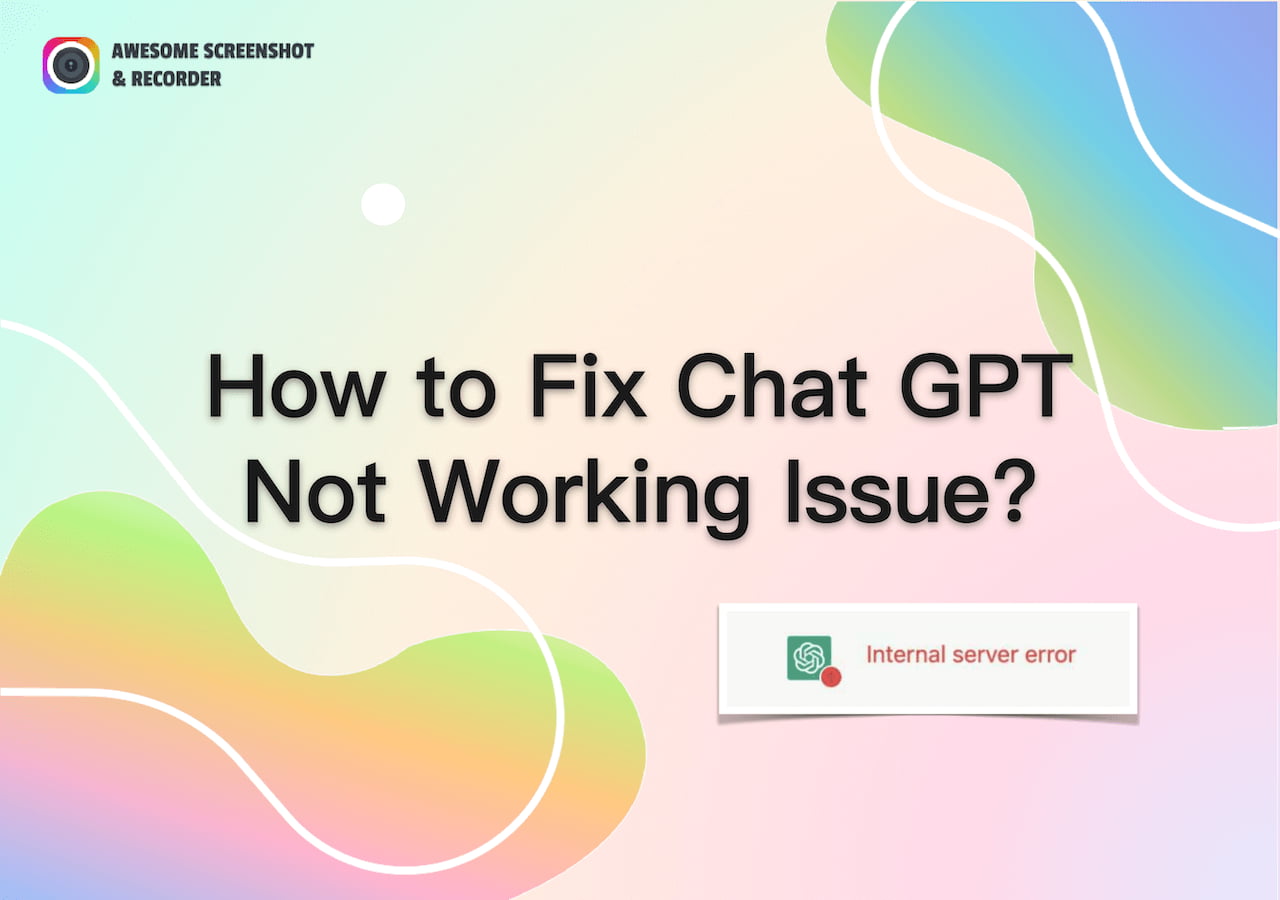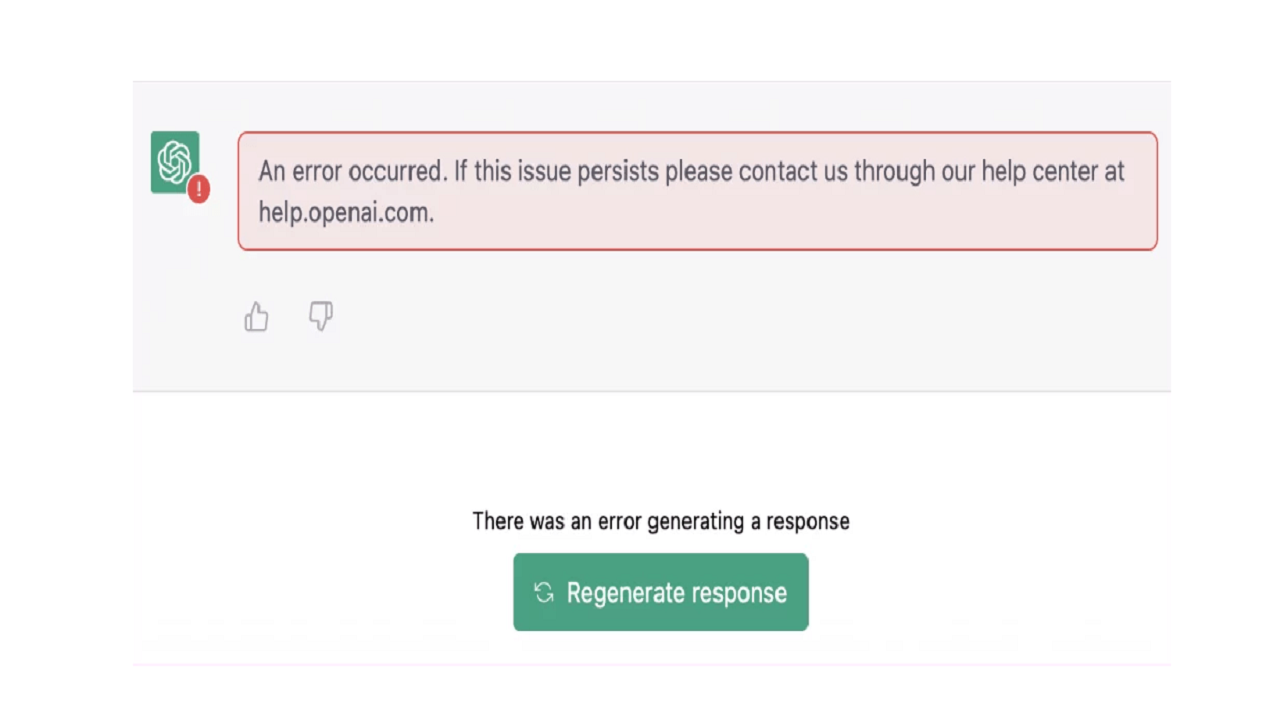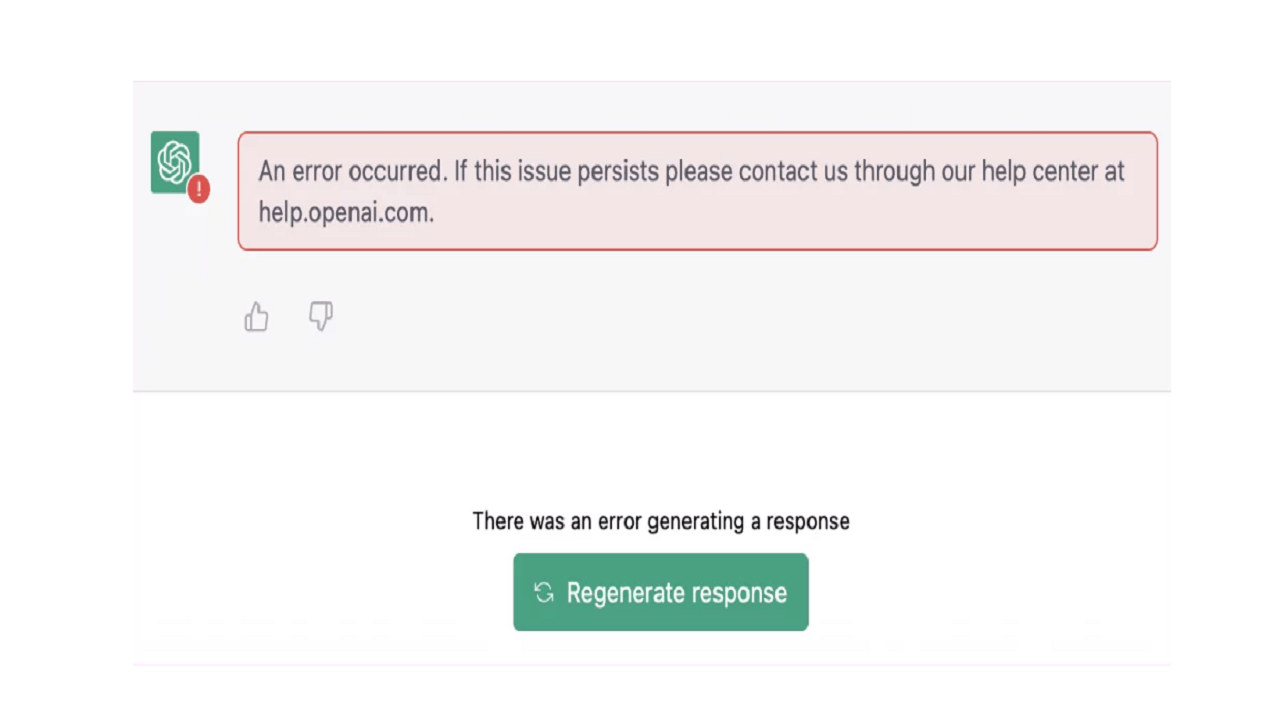Chat GPT Down: When a major language model goes offline, it’s more than just an inconvenience; it’s a disruption to millions. This exploration delves into the causes, consequences, and recovery strategies surrounding such significant service interruptions. We’ll examine the technical hurdles, the user experience during downtime, and the ripple effects across interconnected systems. Think of it as a crash course in understanding the behind-the-scenes workings of large-scale online services and how they handle unexpected failures.
From the initial user frustration to the complex technical troubleshooting involved, we’ll cover the full spectrum of a service outage. We’ll look at how companies communicate during these events, strategies for mitigating negative user experiences, and the importance of robust system design to minimize future disruptions. This is about more than just a temporary glitch; it’s about the resilience of online services and the impact they have on our daily lives.
Service Interruptions: Causes, Impacts, and Communication Strategies: Chat Gpt Down

Service interruptions, or outages, are unavoidable in the digital world. Understanding their causes, impacts, and effective communication strategies is crucial for both service providers and users.
Potential Causes of Widespread Service Outages
Widespread service outages can stem from various sources, including hardware failures (server crashes, network infrastructure problems), software bugs (coding errors, security vulnerabilities), cyberattacks (distributed denial-of-service attacks, data breaches), and natural disasters (power outages, floods).
Impact on Users During Downtime
Downtime significantly impacts users, leading to lost productivity, disrupted workflows, and frustration. Users might experience inability to access services, data loss, and financial repercussions.
Communication Strategies During Outages
Effective communication is vital during outages. Service providers typically utilize multiple channels, such as website updates, social media posts, email alerts, and SMS notifications, to keep users informed about the situation, estimated restoration times, and workarounds.
Bummer, ChatGPT’s down again! If you’re a Telus customer needing help, though, try contacting their loyalty program using this number: telus loyalty phone number. Hopefully, ChatGPT will be back online soon, but in the meantime, you might need to troubleshoot other ways to get your questions answered.
Hypothetical Communication Plan for a Major Service Disruption
A robust communication plan would involve immediate acknowledgment of the outage across all channels, regular updates on progress, transparent explanations of the cause and resolution efforts, and proactive communication of potential workarounds or alternative solutions. Dedicated communication channels (e.g., a dedicated Twitter account or a support forum) can provide a central hub for updates and user interaction.
Comparison of Response Times During Outages
| Service | Initial Acknowledgement (minutes) | Estimated Restoration Time (hours) | Full Restoration Time (hours) |
|---|---|---|---|
| Service A | 15 | 2 | 4 |
| Service B | 30 | 6 | 8 |
| Service C | 5 | 1 | 3 |
User Experience During Downtime
Understanding user experiences during downtime is critical for improving service resilience and minimizing negative impact.
Frustration and Inconvenience Experienced by Users
Users experience significant frustration and inconvenience, ranging from minor annoyance to severe disruption of daily life or business operations. This can lead to lost productivity, missed opportunities, and financial losses.
Examples of User Reactions and Complaints on Social Media
Social media platforms often become focal points for user complaints during outages. Common reactions include expressing anger, disappointment, and demanding accountability from service providers. Examples include tweets expressing frustration about inability to access online banking or social media during a critical moment.
Potential Business Impact of Prolonged Downtime
Prolonged downtime can severely impact businesses, leading to lost revenue, damage to reputation, and decreased customer loyalty. For example, an e-commerce platform facing a prolonged outage could lose significant sales and potentially customers to competitors.
Coping Mechanisms Employed by Users During Service Interruptions
- Switching to alternative services
- Using offline tools or methods
- Waiting for service restoration
- Contacting customer support
Mitigating Negative User Experiences During Downtime
Companies can mitigate negative user experiences by proactively communicating during outages, providing timely updates, and offering alternative solutions or workarounds. A well-designed communication strategy and robust service recovery plan are crucial.
Technical Aspects of Outages
A deep understanding of the technical aspects is crucial for preventing and mitigating outages.
ChatGPT’s down, which is a bummer for anyone needing quick info. It makes you think about other tech failures, like that crazy drone crash in Paris – a completely different kind of outage, but equally disruptive. Hopefully, ChatGPT will be back online soon; we need its help to understand the full impact of events like that drone incident.
Common Technical Issues Leading to Service Disruptions

Common technical issues include hardware failures (server crashes, network connectivity issues), software bugs (coding errors, security vulnerabilities), database errors, and configuration problems.
Comparison of System Redundancy and Failover Approaches, Chat gpt down
System redundancy involves having backup systems or components to take over if the primary system fails. Failover is the process of automatically switching to a backup system. Different approaches exist, such as active-active (both systems are active simultaneously), active-passive (one system is active, the other is on standby), and geographic redundancy (systems are located in different geographic locations).
Role of Monitoring and Alerting Systems in Preventing or Mitigating Outages
Monitoring and alerting systems play a critical role in detecting potential problems before they escalate into major outages. These systems continuously monitor system performance and trigger alerts when thresholds are exceeded, allowing for proactive intervention.
Step-by-Step Procedure for Troubleshooting a Hypothetical Service Disruption
- Identify the affected service and scope of the outage.
- Check system logs and monitoring tools for error messages or performance degradation.
- Isolate the root cause of the problem.
- Implement a solution (e.g., restart services, deploy a patch, or switch to a backup system).
- Monitor the system to ensure the issue is resolved and prevent recurrence.
Flowchart Illustrating the Process of Diagnosing and Resolving a Server-Side Issue
A flowchart would start with “Service Outage Detected,” branching to checks for network connectivity, server status, application logs, and database integrity. Each check would lead to either a resolution path (e.g., restart server, fix code bug) or further investigation, ultimately converging on “Service Restored” or “Escalate to Support Team.”
Impact on Related Services
Service outages rarely exist in isolation; they often impact dependent applications and platforms.
How Outages Affect Dependent Applications or Platforms
Dependent applications rely on the functioning of other services. An outage in one service can cause cascading failures in dependent applications, leading to widespread disruption.
Bummer, Chat GPT’s down again! While you wait for it to come back online, maybe you could check out some cool drone tech? Learn how to set up a drone remote start system – it’s a handy skill to have. Hopefully, Chat GPT will be back up soon, but in the meantime, get your drone flying!
Ripple Effects on Other Interconnected Systems
The ripple effects can extend beyond immediately dependent systems, impacting other interconnected services and creating a domino effect of failures.
Examples of How Businesses Adapt to Such Disruptions
Businesses adapt by implementing redundancy, failover mechanisms, and robust communication protocols. They also focus on disaster recovery planning and regular system testing.
Importance of Robust Inter-Service Communication Protocols
Robust protocols ensure reliable communication between services, allowing for graceful degradation and minimizing the impact of outages. Examples include message queues and API-based communication.
Strategy for Minimizing the Impact on Dependent Services During an Outage

Strategies include implementing circuit breakers, using asynchronous communication, and designing systems with fault tolerance. Prioritizing critical services and implementing graceful degradation are also key.
Visual Representation of the Issue
Imagine a network diagram illustrating data flow through various components (web servers, databases, application servers, etc.). A thick line represents the main data path. The point of failure is shown as a break in this line, specifically at the database server, illustrating how a failure at that point blocks data flow to the web servers, resulting in an outage.
The diagram would also highlight redundant components and failover paths (thin lines) that would ideally take over if the primary path fails.
Hypothetical System Architecture Highlighting Potential Vulnerabilities
A hypothetical system might consist of a load balancer distributing traffic across multiple web servers, each connected to a central database. Potential vulnerabilities include a single point of failure in the database, insufficient load balancing capacity, and lack of redundancy in the network infrastructure. A lack of robust monitoring and alerting mechanisms could also be a significant vulnerability.
How Different Components Interact and How a Failure in One Area Impacts the Entire System
The system’s components interact through API calls and data exchanges. A failure in one component (e.g., database outage) can prevent other components from functioning correctly, leading to a cascading effect that impacts the entire system. For example, if the database is unavailable, the web servers cannot retrieve data, resulting in a service outage for users.
Final Conclusion
Understanding why services like large language models go down isn’t just for techies; it’s crucial for anyone who relies on these platforms. We’ve explored the technical intricacies, the user impact, and the strategies employed to minimize downtime. By understanding the complexities involved, we can appreciate the engineering feats that keep these vital services running smoothly and gain insights into the importance of preparedness and robust system design in the face of unexpected challenges.
The next time a service goes down, you’ll have a much better understanding of what’s happening behind the scenes.
Commonly Asked Questions
What causes a service outage for a large language model?
Several factors can cause outages, including server failures, network issues, software bugs, cyberattacks, and even unexpected surges in demand.
How long do these outages typically last?
It varies greatly. Minor issues might be resolved in minutes, while major outages could last hours or even days.
What can users do during a service outage?
Users can check the service provider’s website for updates, try again later, or explore alternative solutions if available.
Are there ways to predict these outages?
While not perfectly predictable, robust monitoring and alerting systems can help identify potential problems before they lead to widespread outages.
